Article Review: Analysis of Leadership Skills Training Research
VerifiedAdded on 2022/08/24
|5
|882
|14
Report
AI Summary
This report provides a comprehensive review of Khatun's (2013) article, which investigates the relationship between instructional methods and learning styles in leadership skill development. The study employed a case study approach, examining how different training methods, including lectures, role-playing, and video observations, impact learning performance. The research utilized Kolb's learning style model to categorize participants into accommodating, diverging, assimilating, and converging styles. The report critically analyzes the research design, including its strengths and limitations, such as the pre- and post-test design and potential biases. The study's hypotheses, variables, and measurement methods are also examined. The findings revealed that role-playing was the most effective training method, and participants with accommodating learning styles performed better. The report assesses the sample size and the rationale behind random assignment, along with the statistical tests used, such as Cronbach’s alpha and paired t-tests. The analysis concludes with a discussion of the study's implications for leadership training and organizational success.
1 out of 5
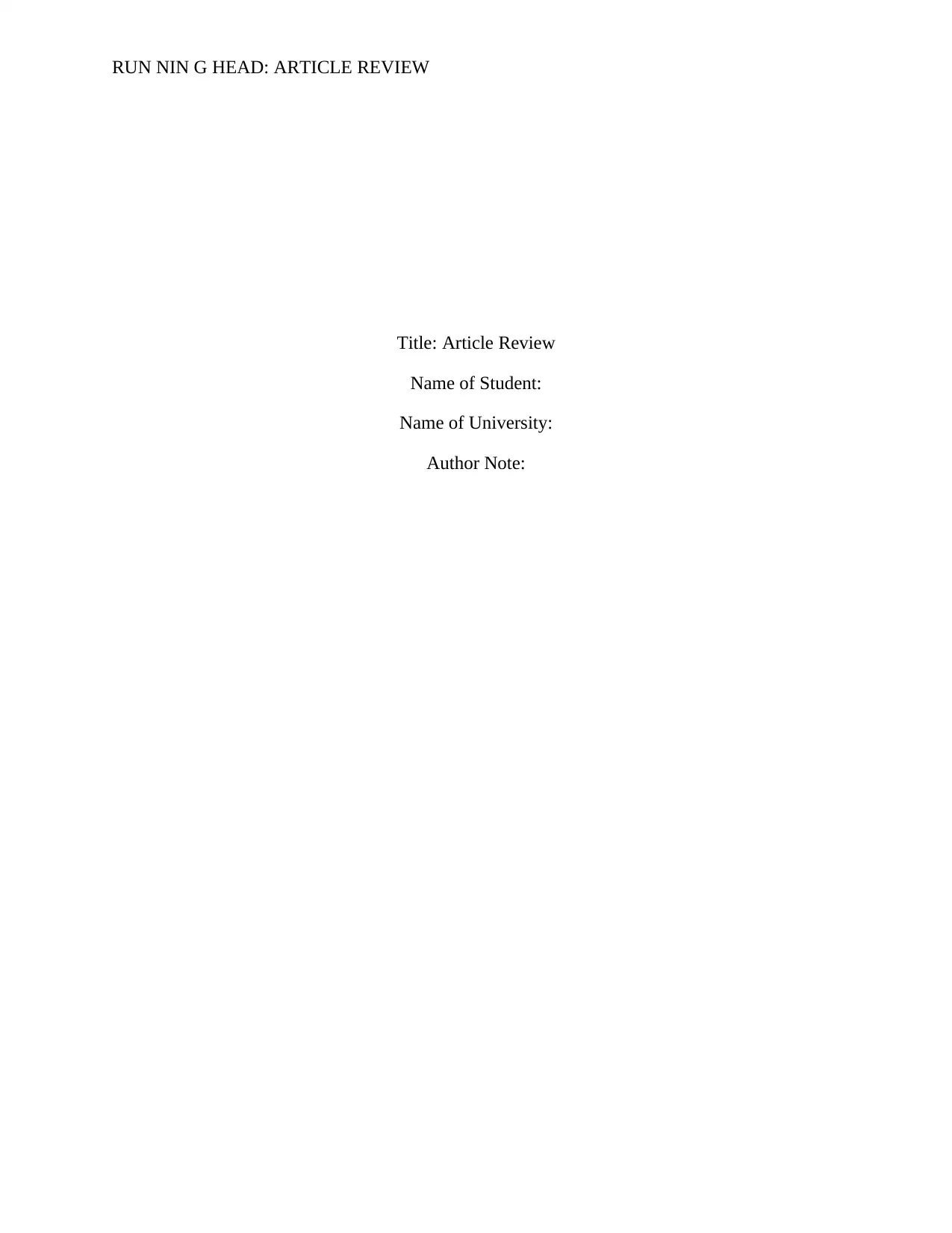
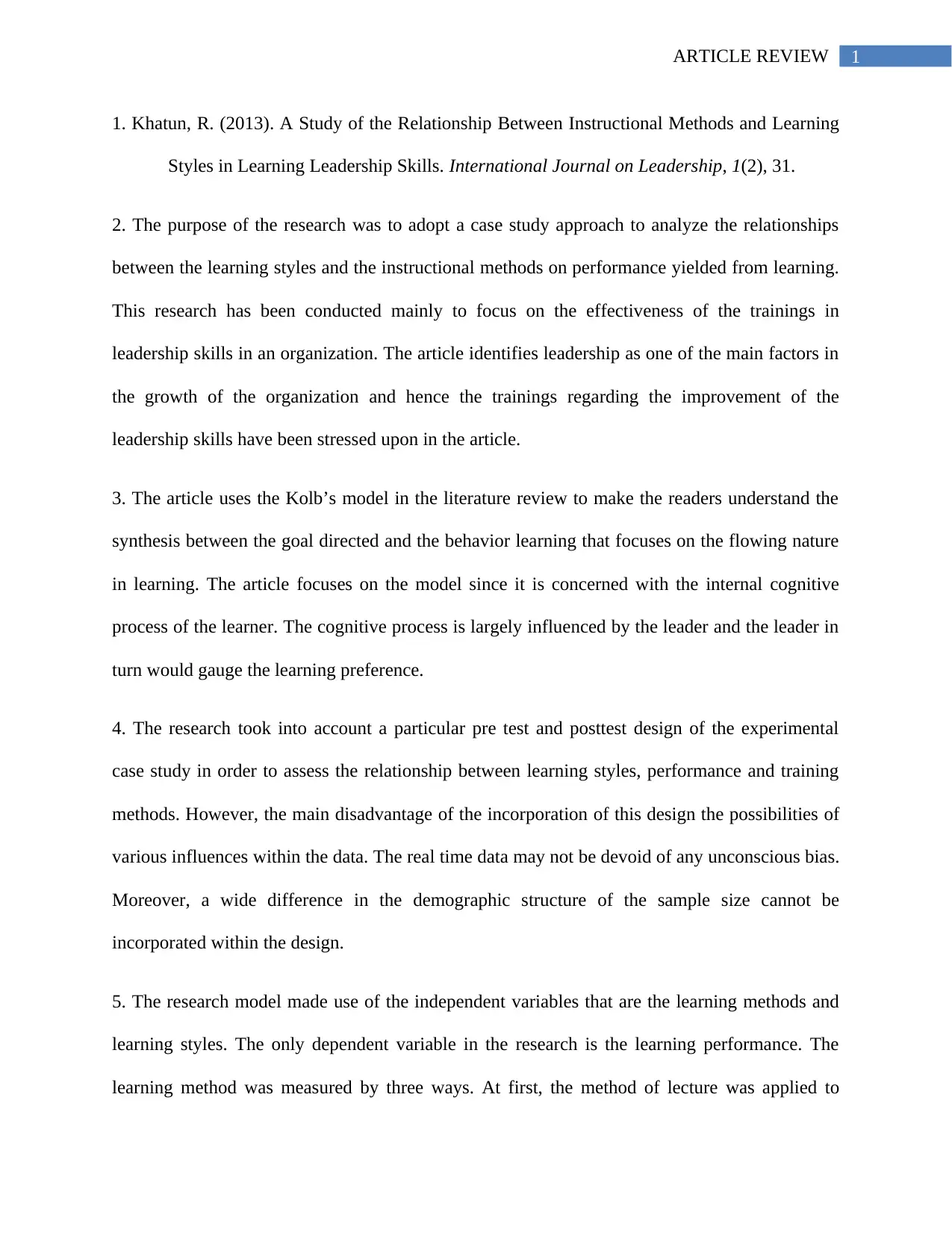
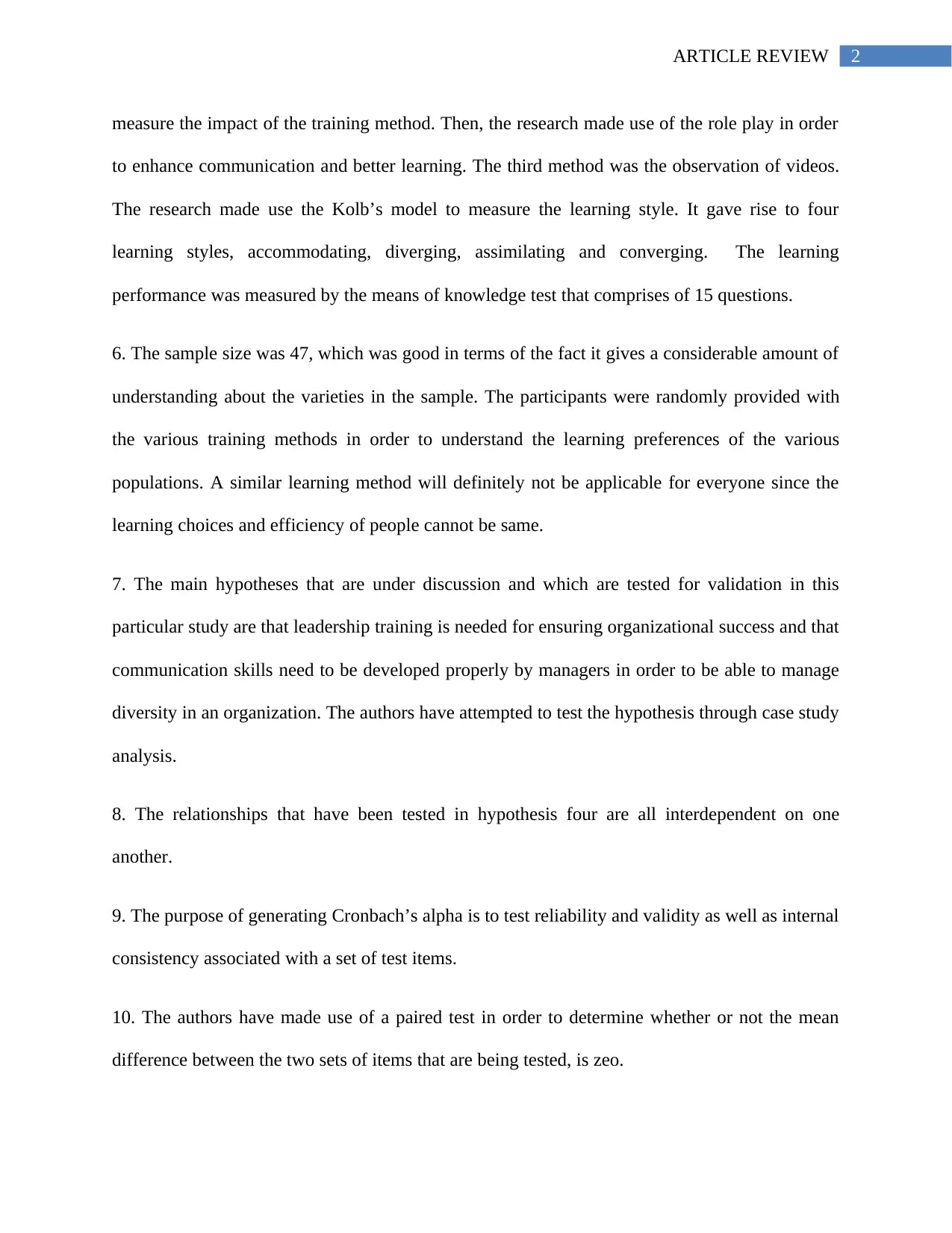

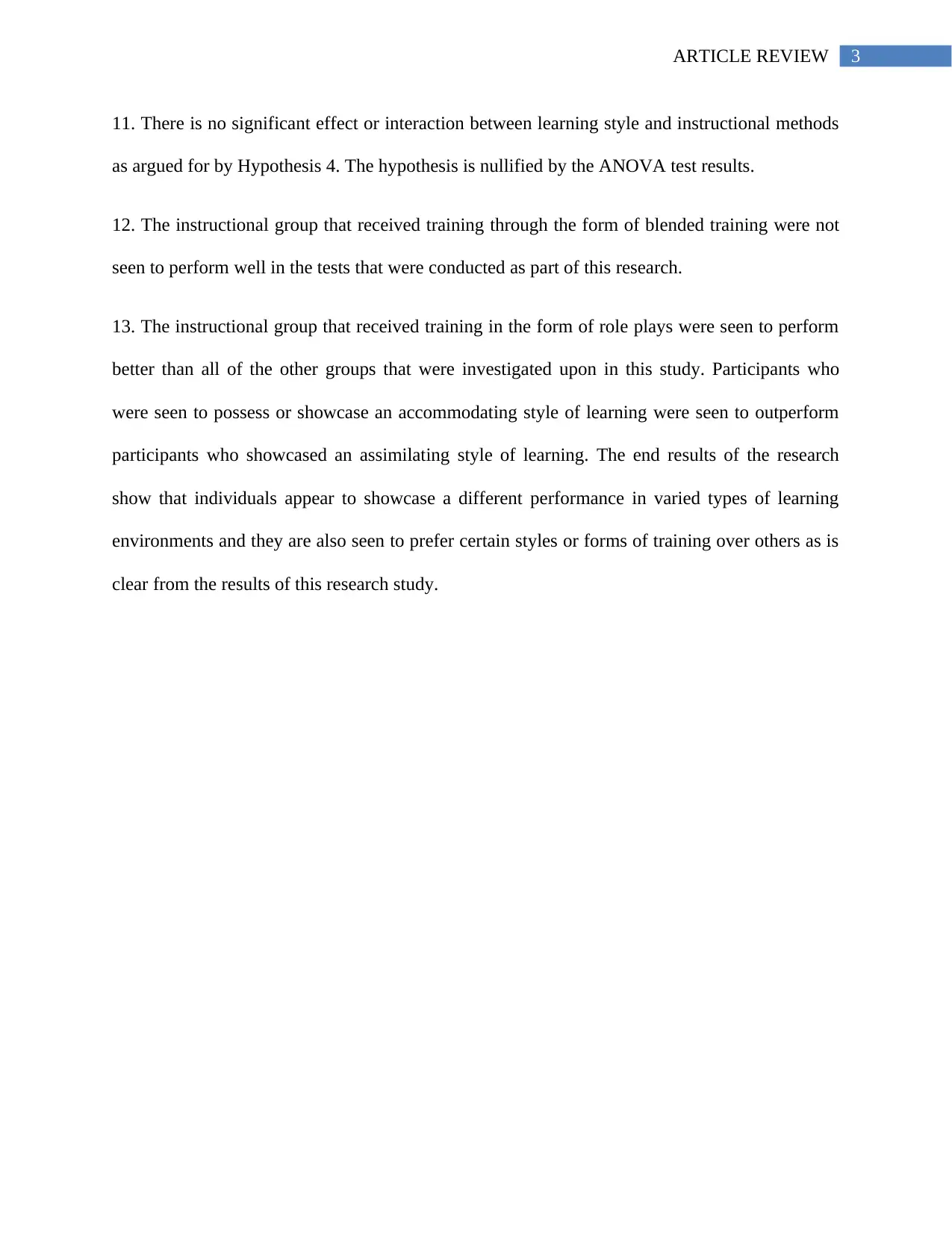
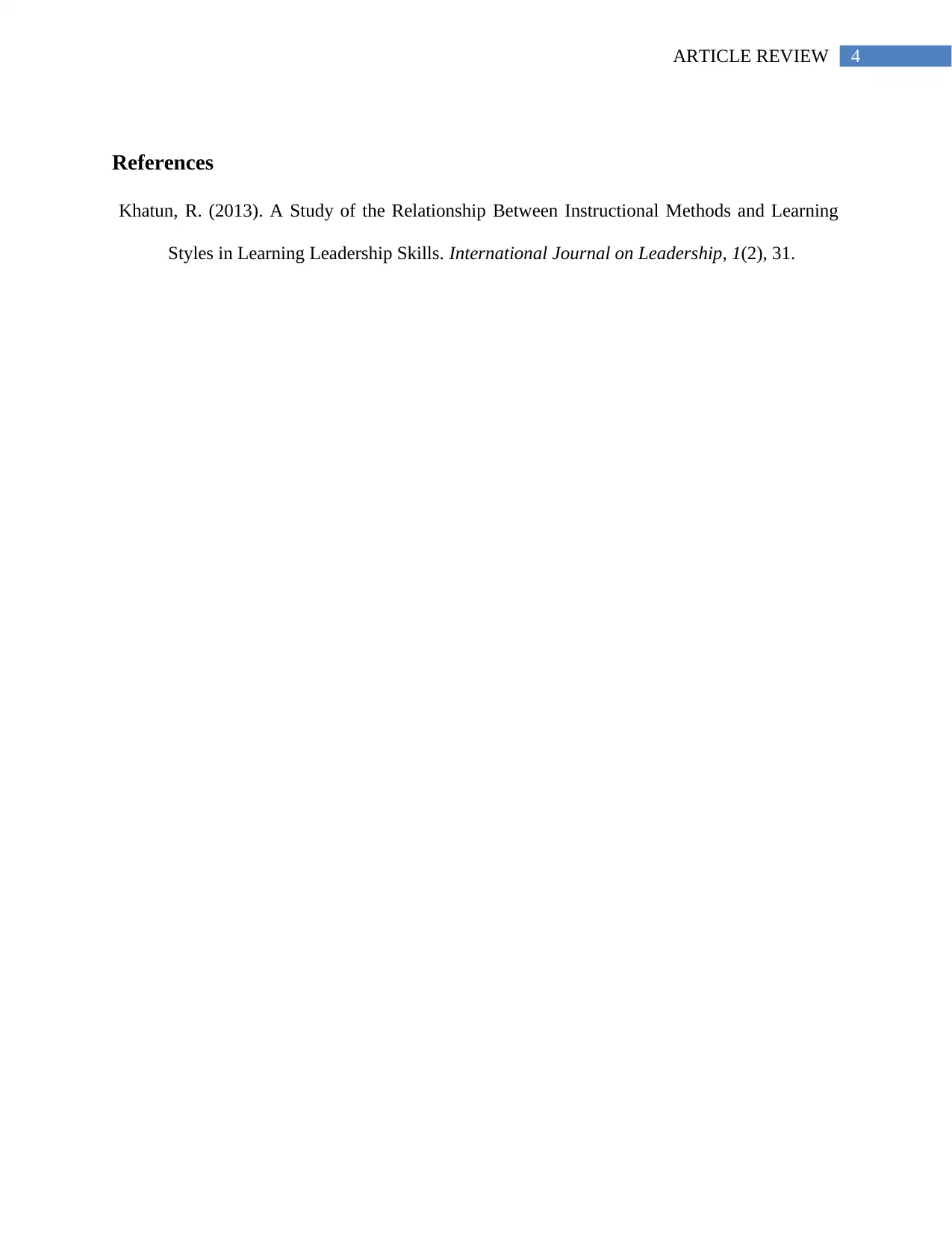






![[object Object]](/_next/static/media/star-bottom.7253800d.svg)